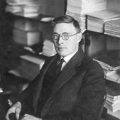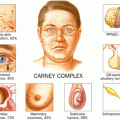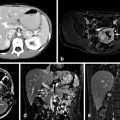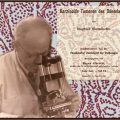Sir Richard Owen. (Reprinted with permission from Modarari et al. [12]. Courtesy of the Hunterian Museum at the Royal College of Surgeons of England)
Evolution of a Scientist
Richard Owen was born on July 20, 1804, in Lancaster, England, as the son of a West India Merchant father and Huguenot mother [1]. He began his schooling at age six, but did not excel in this environment. He developed an interest in medicine, and in 1820 began an apprenticeship with a local apothecary and surgeon. Over the next few years, Owen worked with several surgeons, eventually obtaining an apprenticeship under James Stockdale Harrison. Through Harrison, Owen had access to the county jail, where he began performing autopsies on deceased criminals and developed an interest in anatomy [1].
Prior to completing his apprenticeship, Owen matriculated at the University of Edinburgh in 1824 [1]. There he studied anatomy under Dr. John Barclay and took courses in both clinical medicine and pharmacology. Owen did not remain long in Edinburgh, but transferred to St. Bartholomew’s Hospital in London in 1825. There, at Barclay’s recommendation, he was appointed to prosector for surgical training [1]. He passed his entrance examination for the Royal College of Surgeons in 1826 and established a private practice [1] .
In 1827, Owen became assistant conservator to the Hunterian Museum of the Royal College of Surgeons [1]. This museum contained the collections of John Hunter, a famous surgeon of the eighteenth century. Owen would help identify and catalogue more than 10,000 specimens in the collection [2]. He met and attended lectures by other famous anatomists and naturalists, namely Georges Cuvier and Geoffroy Saint-Hilaire, and his interests rapidly shifted from surgery to comparative anatomy. In 1829, he became a lecturer in this field at St. Bartholomew’s Hospital, but it was his 1832 Memoir on the Pearly Nautilus that vaulted him to the forefront of contemporary anatomists. This work served as a model for subsequent anatomical research publications and is still referenced today when studying these creatures. Owen married the daughter of William Clift, the then chief at the Hunterian Museum, in 1835, and was promoted to head conservator of the museum when Clift retired in 1842 [1] .
Owen’s academic and scientific résumé grew rapidly. Among his many international accomplishments, in 1836, he was appointed the first Hunterian professor of comparative anatomy and physiology at the Royal College of Surgeons, giving 24 lectures each year until his retirement 20 years later. These lectures were given to large audiences and engendered scientific interest across social classes and professions. He helped establish the Royal Microscopical Society in 1839 and served as its first president. He received honorary degrees from Oxford, Cambridge, and Dublin, and was an honorary or corresponding member of “nearly every scientific society in the world [1].” Owen tutored the royal children at Buckingham Palace, and was given a place of permanent residence at Richmond Park by the queen, where he lived until his death. He was made a knight in the French Legion of Honor by Napoleon III. For reasons unknown, he declined his first offer of English knighthood in 1842, though he would ultimately accept this honor in 1883 [1, 3].
During this time, he became more socially and politically active. He was friends with many famous artists and writers of the day, including Charles Dickens and Tennyson. He was a gifted vocalist and played the flute and violoncello, could recite literature and poetry, and loved the theater. In 1845, Owen was elected into “The Club,” an exclusive men’s dining club composed of authors, artists, scientists, and statesmen. He worked on sewage and public sanitation projects, and in 1847 began service on a government public health commission to influence regulation of abattoirs and the meat production industry [1, 3].
By 1855, Owen had written over 250 scientific papers, including Descriptive and Illustrative Catalogue of the Physiological Series of Comparative Anatomy, a five-volume work that described the results of dissection of almost 4000 specimens. To obtain material for this work, he began dissecting animals that died in the gardens of the Zoological Society, a practice that would eventually lead to his identification of new “glandular bodies” in the neck.
It was also during this period that he became very interested in the study of fossils and evolutionary biology, an interest that would both cement his fame in popular history and lead to his academic downfall.
On the Evolution of Natural History
Owen had become very interested in fossilized remains and natural history through his museum work, and by the mid-1830s was one of the world’s foremost authorities on osteology, comparative anatomy, and extinct species. In 1842, he published his Report on British Fossil Reptiles, in which he proposed the name “Dinosauria” to classify a distinct group of extinct reptiles, and supervised the creation of life-sized models of these creatures for public display at the Crystal Palace, the world’s largest glass building, in 1855. He would go on to describe a number of extinct species, including the giant moa and Archaeopteryx, the first known fossilized link between reptiles and birds.
Conflicts over administrative duties at the Royal College of Surgeons led Owen to move to the British Museum in 1856, where he became superintendent of the Natural History Department [1]. He pushed parliament to establish a separate British Museum of Natural History (now known as the Natural History Museum), which was opened in 1881. Museums before this time had been primarily a repository of specimens for scientific research. Owen’s revolutionary vision was to create a place of public education, where displays were arranged by subject matter and featured specimens that would most easily convey natural history to the general public [1].
Stay updated, free articles. Join our Telegram channel

Full access? Get Clinical Tree







